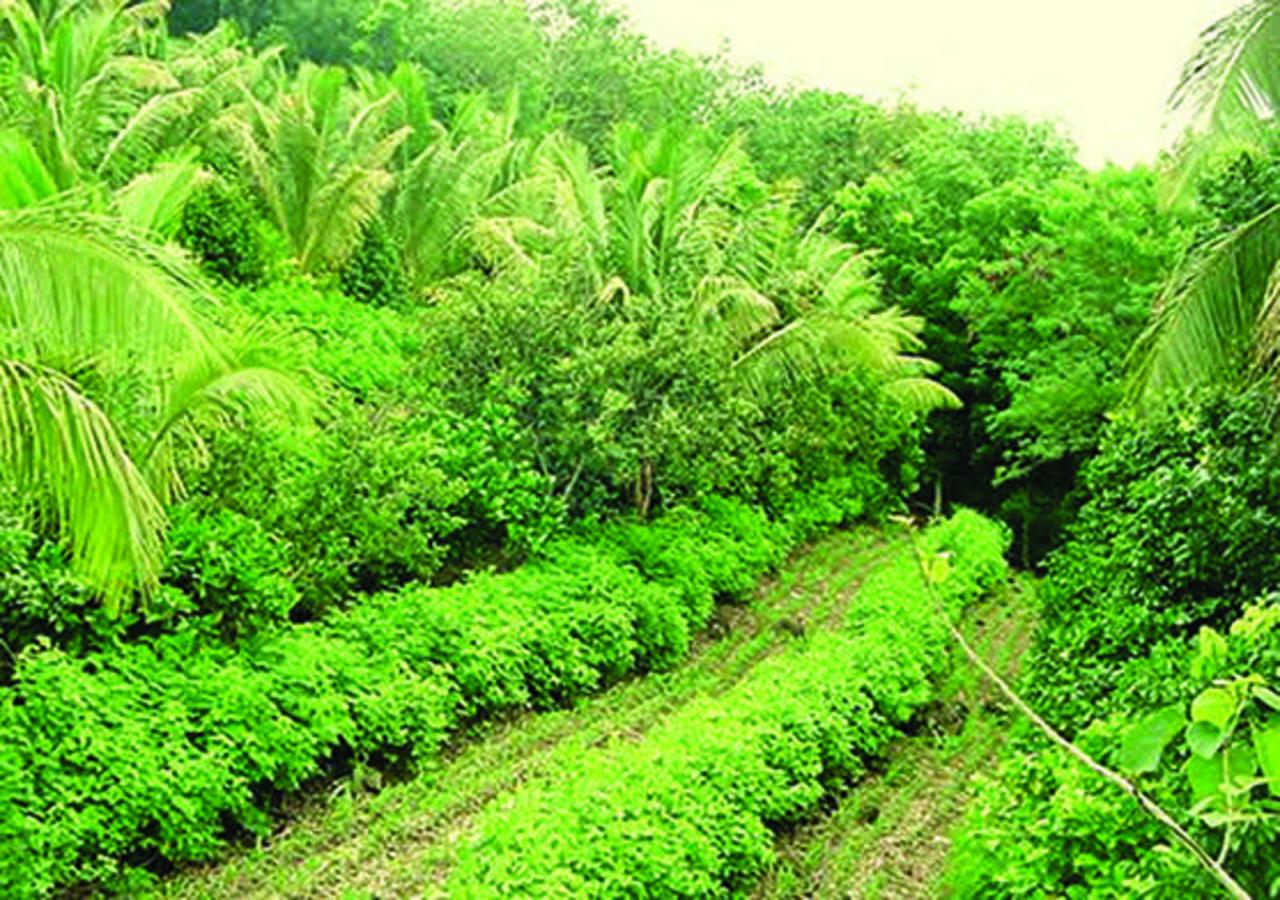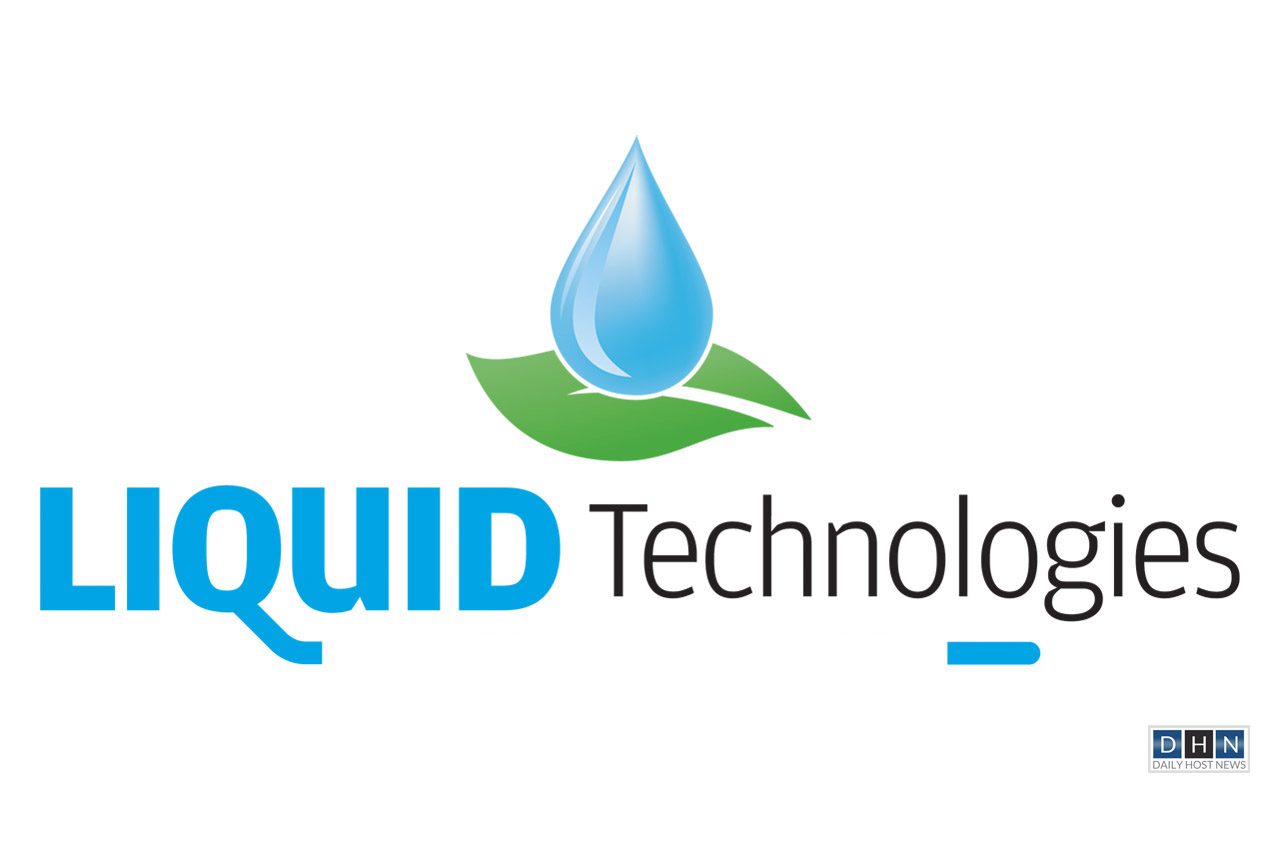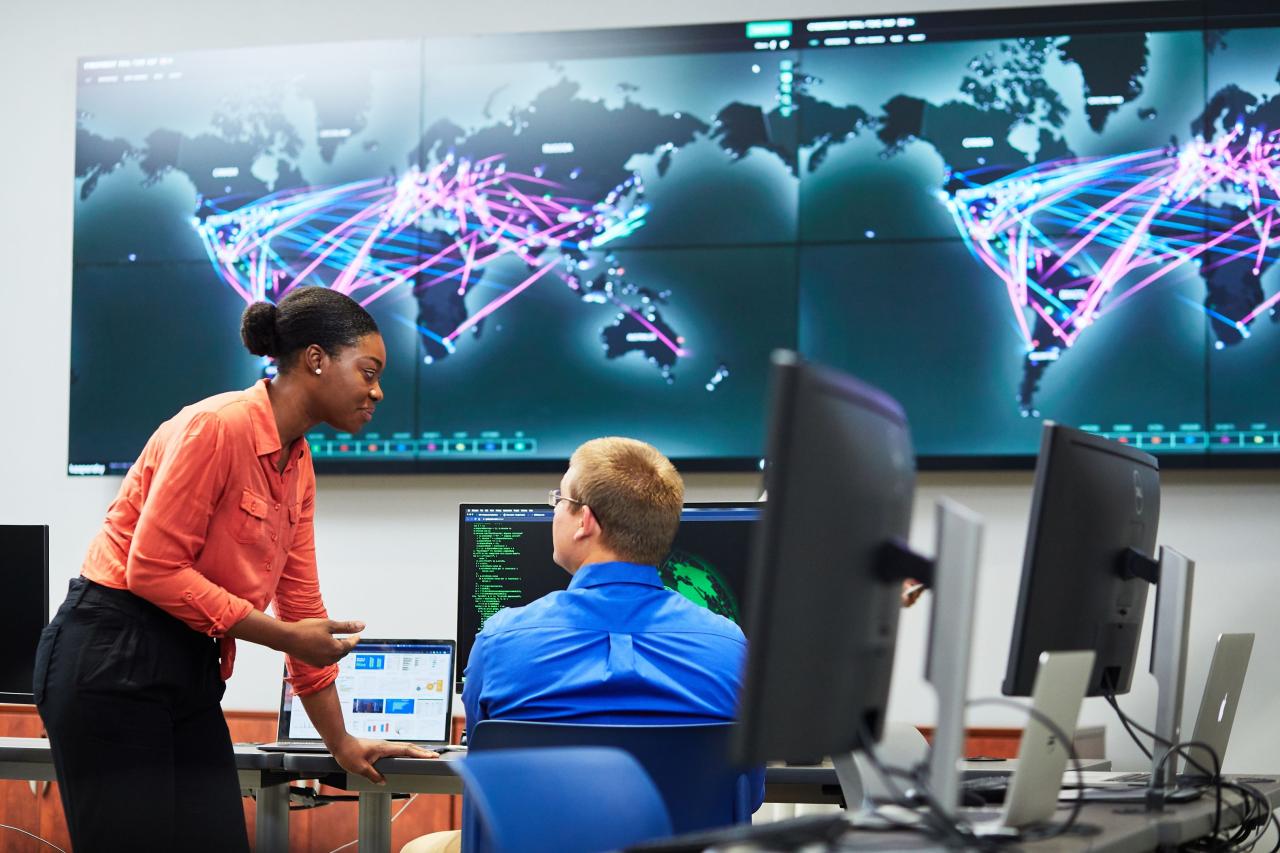Land Technology: Shaping the Future of Land Management
Land technology, a powerful combination of surveying, mapping, and data analysis, is revolutionizing how we manage and understand our planet’s most valuable resource: land. From precision agriculture to urban planning, […]

Land technology, a powerful combination of surveying, mapping, and data analysis, is revolutionizing how we manage and understand our planet’s most valuable resource: land. From precision agriculture to urban planning, land technology is driving innovation and sustainability in a wide range of fields.
By harnessing the power of GPS, GIS, remote sensing, and other cutting-edge tools, land technology empowers us to gather, analyze, and visualize land data with unprecedented accuracy and detail. This information is then used to make informed decisions about land use, resource management, and infrastructure development.
Land Surveying and Mapping: Land Technology
Land surveying plays a crucial role in land technology, providing the foundational data for various applications, including infrastructure development, resource management, and urban planning. Modern surveying techniques have revolutionized the field, enabling faster, more accurate, and detailed data acquisition.
Modern Surveying Techniques
Modern surveying techniques leverage advanced instruments and technologies to collect precise spatial data. These techniques are essential for creating accurate maps and models, supporting informed decision-making in various land-related activities.
- Global Positioning System (GPS): GPS is a satellite-based navigation system that provides precise location coordinates. Surveyors use GPS receivers to determine the positions of points on the ground, enabling them to create accurate maps and plans.
- Light Detection and Ranging (LiDAR): LiDAR is a remote sensing technology that uses laser pulses to measure distances to the ground. By scanning the terrain, LiDAR creates detailed 3D models of the land surface, capturing features such as elevation, vegetation, and buildings. This data is valuable for various applications, including terrain analysis, flood modeling, and infrastructure planning.
- Total Station: Total stations are electronic surveying instruments that combine the functions of a theodolite, distance meter, and data recorder. They are used to measure distances, angles, and elevations with high accuracy. Total stations are commonly employed in construction projects, boundary surveys, and topographic mapping.
- Unmanned Aerial Vehicles (UAVs): UAVs, also known as drones, are becoming increasingly popular in surveying. Equipped with cameras and sensors, UAVs can capture aerial images and data of large areas quickly and efficiently. This data can be used to create orthophoto maps, digital elevation models, and 3D models of the terrain.
Applications of Land Surveying Data
Land surveying data is essential for creating maps and conducting spatial analysis, which are vital for various land-related applications.
- Mapping: Land surveying data forms the basis for creating accurate maps, which are essential for navigation, planning, and resource management. Different types of maps, such as topographic maps, cadastral maps, and thematic maps, are created using surveying data to depict various aspects of the land surface.
- Spatial Analysis: Spatial analysis involves the use of geographic information systems (GIS) to analyze and interpret spatial data. Land surveying data is crucial for spatial analysis, allowing researchers and planners to understand patterns, relationships, and trends in land use, infrastructure, and environmental factors.
- Infrastructure Development: Land surveying data is essential for planning and constructing infrastructure projects, such as roads, bridges, and buildings. Accurate surveying data ensures the proper alignment and location of structures, minimizing errors and ensuring safety.
- Resource Management: Land surveying data is used to manage natural resources, such as forests, water bodies, and mineral deposits. By mapping and analyzing land use patterns, resource managers can make informed decisions about conservation, exploitation, and sustainable development.
Comparison of Traditional and Modern Surveying Methods
| Feature | Traditional Surveying Methods | Modern Surveying Techniques |
|---|---|---|
| Accuracy | Lower accuracy due to reliance on manual measurements and instruments | Higher accuracy due to advanced instruments and technologies |
| Speed | Slower data acquisition process | Faster data acquisition due to automation and advanced technologies |
| Cost | Relatively lower cost | Higher initial investment in equipment and software |
| Data Volume | Limited data collection | Large volumes of data collected, enabling detailed analysis |
| Applications | Limited applications due to accuracy and speed constraints | Wide range of applications, including infrastructure development, resource management, and urban planning |
Geographic Information Systems (GIS)
Geographic Information Systems (GIS) is a powerful tool for managing and analyzing spatial data. It integrates data from various sources, such as maps, satellite imagery, and databases, to create interactive visualizations and perform complex spatial analyses. This technology plays a crucial role in land management, enabling informed decision-making across diverse applications.
Applications of GIS in Land Management
GIS is widely used in land management, providing valuable insights for various purposes. Here are some key applications:
- Land Use Planning: GIS facilitates efficient land use planning by analyzing factors like soil type, elevation, proximity to infrastructure, and existing land uses. This allows for informed decisions on zoning, development, and conservation efforts.
- Environmental Monitoring: GIS enables tracking and monitoring environmental changes over time. By integrating data from remote sensing, weather stations, and other sources, GIS helps assess deforestation, pollution levels, and natural resource depletion, aiding in conservation and mitigation strategies.
- Infrastructure Development: GIS supports the planning and management of infrastructure projects. It helps determine optimal locations for roads, pipelines, and other infrastructure based on factors like terrain, population density, and environmental constraints.
- Property Management: GIS assists in managing land parcels, tracking ownership records, and assessing property values. It provides a comprehensive view of land ownership, boundaries, and other relevant attributes, streamlining property administration and transactions.
- Natural Disaster Management: GIS plays a vital role in disaster preparedness and response. It helps identify vulnerable areas, predict potential impacts, and optimize resource allocation during emergencies. GIS also supports post-disaster recovery efforts by assessing damage and facilitating reconstruction planning.
Data Visualization, Analysis, and Decision-Making
GIS excels in data visualization, providing intuitive representations of spatial information. It allows users to create maps, charts, and interactive dashboards that convey complex data patterns and relationships. This visual understanding aids in identifying trends, analyzing spatial patterns, and making informed decisions.
GIS also enables sophisticated spatial analysis, which involves applying various analytical techniques to spatial data. These techniques include:
- Buffer Analysis: Creating buffer zones around specific features to assess areas of influence or potential impact.
- Overlay Analysis: Combining multiple data layers to identify areas that meet specific criteria, such as finding suitable locations for a new development based on zoning regulations, environmental constraints, and infrastructure access.
- Network Analysis: Analyzing the connectivity and efficiency of transportation networks, identifying optimal routes, and evaluating potential bottlenecks.
- Spatial Statistics: Applying statistical methods to spatial data to identify patterns, trends, and relationships, such as analyzing crime rates across different neighborhoods.
GIS facilitates decision-making by integrating spatial data with other relevant information, such as demographics, economic indicators, and policy guidelines. This integrated approach provides a comprehensive understanding of the context, enabling stakeholders to make informed decisions based on sound spatial analysis.
Examples of GIS Applications
Here are some real-world examples of how GIS is used in land management:
- Land Use Planning in Urban Areas: Cities use GIS to develop comprehensive land use plans, balancing development needs with environmental protection. By analyzing factors like population growth, infrastructure capacity, and environmental constraints, GIS helps optimize land use for residential, commercial, and industrial purposes. For example, GIS can be used to identify areas suitable for high-density housing development while preserving green spaces and natural habitats.
- Environmental Monitoring of Water Quality: GIS is used to monitor water quality in rivers, lakes, and coastal areas. By integrating data from water sampling stations, satellite imagery, and hydrological models, GIS helps identify pollution sources, track changes in water quality over time, and inform management strategies for water resource protection.
- Infrastructure Development for Transportation: GIS is essential for planning and managing transportation infrastructure. It helps determine optimal routes for roads, railways, and public transportation systems, considering factors like terrain, population density, and existing infrastructure. GIS also assists in assessing the environmental impact of transportation projects and identifying mitigation measures.
Remote Sensing and Aerial Imagery

Remote sensing is a powerful technology that allows us to gather information about the Earth’s surface without physically being there. It uses various sensors, typically mounted on satellites, airplanes, or drones, to capture data in different wavelengths of the electromagnetic spectrum. This data is then processed and analyzed to provide valuable insights into the Earth’s environment, resources, and human activities.
Applications of Remote Sensing in Land Technology
Remote sensing plays a crucial role in land technology by providing comprehensive and timely information for various applications.
- Land Cover Mapping and Monitoring: Remote sensing data can be used to identify different land cover types, such as forests, grasslands, water bodies, and urban areas. This information is essential for understanding land use patterns, monitoring land cover changes over time, and managing natural resources.
- Agricultural Productivity Assessment: Remote sensing techniques can be used to monitor crop health, estimate crop yields, and assess the impact of climate change on agriculture. Satellite imagery, for example, can provide information about vegetation indices, which are indicators of plant health and growth.
- Natural Resource Management: Remote sensing data is vital for managing natural resources, such as water resources, forests, and wildlife habitats. For instance, satellite imagery can be used to monitor water levels in reservoirs, identify deforestation patterns, and track wildlife movements.
- Urban Planning and Development: Remote sensing data can be used to create detailed maps of urban areas, monitor urban sprawl, and assess the impact of development on the environment. Aerial photography, in particular, can provide high-resolution images of urban landscapes, aiding in urban planning and infrastructure development.
- Disaster Management: Remote sensing plays a crucial role in disaster response and mitigation. Satellite imagery can be used to assess the extent of damage caused by natural disasters, such as earthquakes, floods, and wildfires, and to monitor the progress of relief efforts.
Satellite Imagery
Satellite imagery is a powerful tool for land monitoring and analysis. Satellites orbiting the Earth capture images of the surface at various spatial resolutions, providing a comprehensive view of the Earth’s landscape.
- Landsat: Landsat satellites have been providing continuous global imagery since the 1970s, offering valuable data for land cover mapping, agricultural monitoring, and natural resource management.
- Sentinel-2: The European Space Agency’s Sentinel-2 mission provides high-resolution multispectral imagery for a wide range of applications, including land cover mapping, agricultural monitoring, and disaster response.
- MODIS: The Moderate Resolution Imaging Spectroradiometer (MODIS) is a sensor on NASA’s Terra and Aqua satellites, providing global coverage at medium resolution. It is used for monitoring vegetation health, fire activity, and oceanographic features.
Aerial Photography
Aerial photography involves capturing images of the Earth’s surface from an aircraft or drone. This technology provides high-resolution images that can be used for various purposes, including land surveying, mapping, and urban planning.
- Orthophotography: Orthophotos are aerial photographs that have been geometrically corrected to remove distortions caused by camera tilt and terrain relief. They provide a true representation of the Earth’s surface and are widely used in mapping and land information systems.
- Digital Aerial Photography: Modern aerial photography systems use digital cameras to capture images, offering advantages such as high resolution, color accuracy, and ease of processing.
Drone Technology
Drone technology has revolutionized remote sensing by providing a cost-effective and flexible platform for data acquisition. Drones can be equipped with various sensors, including cameras, LiDAR, and multispectral sensors, to capture high-resolution images and data.
- Drone-Based Imagery: Drones can capture high-resolution aerial imagery of specific areas, providing detailed information for land surveying, mapping, and infrastructure inspection.
- LiDAR: Light Detection and Ranging (LiDAR) is a remote sensing technique that uses laser pulses to measure distances and create 3D models of the Earth’s surface. Drone-based LiDAR systems are becoming increasingly popular for applications such as topographic mapping, infrastructure assessment, and forest inventory.
Examples of Remote Sensing Applications
- Identifying Land Cover Changes: Remote sensing data can be used to track changes in land cover over time, such as deforestation, urbanization, and agricultural expansion. This information is crucial for understanding the impact of human activities on the environment and for making informed decisions about land management.
- Assessing Agricultural Productivity: Satellite imagery can be used to monitor crop health, estimate crop yields, and assess the impact of climate change on agriculture. For example, the Normalized Difference Vegetation Index (NDVI) is a widely used vegetation index that can be calculated from satellite imagery to assess crop health and vigor.
- Managing Natural Resources: Remote sensing data is vital for managing natural resources, such as water resources, forests, and wildlife habitats. For instance, satellite imagery can be used to monitor water levels in reservoirs, identify deforestation patterns, and track wildlife movements.
Remote Sensing Platforms and Applications
| Platform | Applications |
|---|---|
| Satellites | Land cover mapping, agricultural monitoring, natural resource management, disaster response, climate change monitoring |
| Aircraft | Aerial photography, orthophotography, LiDAR, hyperspectral imaging |
| Drones | High-resolution imagery, LiDAR, multispectral imaging, infrastructure inspection, precision agriculture |
Land Information Management Systems (LIMS)
Land Information Management Systems (LIMS) are sophisticated software systems designed to manage and integrate vast amounts of geospatial data related to land. They serve as central repositories for information about land parcels, ownership, boundaries, zoning regulations, and other relevant details.
The Role of LIMS
LIMS play a crucial role in managing land data and information by providing a comprehensive framework for:
- Data Collection: LIMS facilitate the collection of land data from various sources, including surveys, aerial imagery, and government records. They ensure data consistency and accuracy by establishing standardized formats and procedures for data entry.
- Data Storage: LIMS provide secure and organized storage for land data, ensuring its accessibility and integrity. They employ robust database management systems to manage large datasets and facilitate efficient retrieval of information.
- Data Analysis: LIMS offer powerful tools for analyzing land data, enabling users to identify patterns, trends, and relationships within the information. This analysis can support decision-making in areas such as urban planning, infrastructure development, and environmental management.
- Data Dissemination: LIMS facilitate the dissemination of land information to various stakeholders, including government agencies, private companies, and the public. They enable the creation of interactive maps, reports, and other visualization tools to effectively communicate land-related information.
Components of a LIMS
A typical LIMS consists of several interconnected components, each playing a specific role in managing land information:
- Data Acquisition Module: This module handles the collection of land data from various sources, including surveys, aerial imagery, and databases. It ensures data quality and consistency by implementing standardized data formats and procedures.
- Data Storage and Management Module: This module manages the storage, organization, and retrieval of land data. It employs robust database management systems to ensure data integrity and accessibility.
- Data Processing and Analysis Module: This module provides tools for analyzing land data, including spatial analysis, statistical analysis, and data visualization. It enables users to identify patterns, trends, and relationships within the information.
- Data Dissemination Module: This module facilitates the sharing of land information with various stakeholders. It supports the creation of interactive maps, reports, and other visualization tools to effectively communicate land-related information.
- User Interface Module: This module provides a user-friendly interface for interacting with the LIMS. It allows users to access, manage, and analyze land data through a range of tools and functionalities.
Applications of LIMS
LIMS have numerous applications in various fields, including:
- Property Management: LIMS are widely used for property management, providing comprehensive information about property boundaries, ownership, and associated legal documents. This information is crucial for property valuation, taxation, and dispute resolution.
- Cadastral Mapping: LIMS support the creation and maintenance of cadastral maps, which depict land ownership and boundaries. These maps are essential for land administration, property transactions, and infrastructure development.
- Land Registration: LIMS play a critical role in land registration systems, providing a secure and reliable record of land ownership and transactions. They help ensure transparency and prevent land fraud.
- Urban Planning: LIMS provide valuable data for urban planning, enabling planners to analyze land use patterns, identify development opportunities, and assess the impact of proposed projects.
- Environmental Management: LIMS support environmental management by providing information about land cover, soil types, and water resources. This information is crucial for monitoring environmental changes, managing natural resources, and mitigating environmental risks.
Architecture of a Typical LIMS
The following diagram illustrates the architecture of a typical LIMS:
[Diagram depicting the architecture of a typical LIMS, showcasing its components and their interactions. This diagram should be visually appealing and easy to understand. It should highlight the flow of data within the system, from acquisition to dissemination.]
Land technology is rapidly evolving, with advancements in precision agriculture, remote sensing, and geographic information systems (GIS). As a highly motivated and experienced IT professional, I’m eager to contribute my expertise in this field. To gain insights into the role of an Information Technology Manager, I recommend checking out this helpful resource: information technology manager cover letter.
By understanding the responsibilities and qualifications required for this position, I can better align my skills and experience to make a meaningful impact in the realm of land technology.
Land Technology and Sustainability
Land technology plays a crucial role in promoting sustainable land use practices. By leveraging advanced tools and techniques, we can better understand and manage our land resources, ensuring their long-term viability for future generations.
The Role of Land Technology in Sustainable Land Use
Land technology empowers us to make informed decisions regarding land use by providing a comprehensive understanding of the land’s characteristics, potential, and constraints. This knowledge is essential for promoting sustainable practices that balance economic development with environmental protection.
Land Technology’s Contribution to Climate Change Mitigation
Land technology can significantly contribute to mitigating climate change through various applications:
- Precise Land-Use Planning: Land technology enables the identification of areas suitable for renewable energy sources like solar and wind power, reducing reliance on fossil fuels.
- Carbon Sequestration Mapping: Land technology helps map areas with high carbon sequestration potential, such as forests and wetlands, enabling targeted conservation and restoration efforts.
- Sustainable Agriculture Practices: Land technology assists in optimizing crop yields, reducing water and fertilizer use, and minimizing soil erosion, all of which contribute to carbon mitigation.
Land Technology for Biodiversity Conservation
Land technology plays a vital role in biodiversity conservation by:
- Habitat Mapping and Monitoring: Land technology facilitates the mapping and monitoring of critical habitats for endangered species, allowing for targeted conservation efforts.
- Species Distribution Modeling: Land technology assists in predicting species distribution based on environmental factors, helping to identify areas requiring protection.
- Protected Area Management: Land technology supports the efficient management of protected areas, including monitoring wildlife populations, tracking human activities, and identifying potential threats.
Land Technology for Natural Resource Management
Land technology aids in managing natural resources sustainably through:
- Water Resource Management: Land technology enables the mapping and monitoring of water resources, identifying areas prone to drought or flooding, and optimizing water allocation.
- Forest Management: Land technology assists in monitoring forest health, tracking deforestation, and planning sustainable logging practices.
- Mineral Resource Management: Land technology facilitates the exploration and extraction of mineral resources while minimizing environmental impact.
Successful Land Technology Applications for Sustainable Development
Several successful land technology applications demonstrate its impact on sustainable development:
- Precision Agriculture: Using GPS-guided tractors and drones, farmers can optimize fertilizer and pesticide application, minimizing environmental impact and improving yields.
- Reforestation and Restoration: Land technology aids in identifying areas suitable for reforestation and restoration, facilitating the planting of native species and restoring degraded ecosystems.
- Urban Planning: Land technology helps in developing sustainable urban plans by identifying areas for green spaces, transportation infrastructure, and efficient resource management.
Case Study: Land Technology and Environmental Conservation in the Amazon Rainforest
A case study in the Amazon Rainforest highlights the role of land technology in environmental conservation. Researchers used remote sensing and GIS to map deforestation patterns and identify areas with high biodiversity value. This data allowed for targeted conservation efforts, leading to a significant reduction in deforestation rates and the protection of critical ecosystems.
Future Trends in Land Technology
The field of land technology is rapidly evolving, driven by advancements in computing power, data accessibility, and innovative applications. Emerging technologies are transforming how we manage, analyze, and utilize land resources, leading to a more sustainable and efficient future.
Impact of Artificial Intelligence, Big Data Analytics, and Blockchain
Artificial intelligence (AI), big data analytics, and blockchain are revolutionizing land management practices. AI algorithms can analyze vast datasets to identify patterns and trends, enabling more accurate land use planning, resource allocation, and risk assessment. Big data analytics empowers informed decision-making by extracting valuable insights from diverse data sources, including satellite imagery, sensor data, and historical records. Blockchain technology provides a secure and transparent platform for land ownership and transaction records, reducing fraud and improving efficiency.
Innovative Applications of Land Technology
- Precision Agriculture: AI-powered drones and sensors collect real-time data on soil conditions, crop health, and weather patterns, enabling farmers to optimize fertilizer and water usage, minimize waste, and maximize yields.
- Smart Cities: Land technology plays a crucial role in developing smart cities. Geographic information systems (GIS) and sensor networks monitor traffic flow, energy consumption, and environmental conditions, enabling efficient urban planning, resource management, and public safety.
- Disaster Management: Land technology assists in disaster preparedness and response. Remote sensing and aerial imagery provide real-time information on flood zones, earthquake damage, and wildfire spread, enabling rapid assessment and efficient deployment of resources.
Timeline of Key Milestones and Future Directions
Land technology has evolved significantly over the past decades, with key milestones shaping its trajectory.
- 1970s-1980s: Development of Geographic Information Systems (GIS) and remote sensing technologies revolutionized land data management and analysis.
- 1990s-2000s: Advancements in computer processing power and the rise of the internet enabled wider adoption and integration of land technology applications.
- 2010s-Present: The emergence of AI, big data analytics, and blockchain technologies is driving innovation in land management, leading to more sophisticated and data-driven approaches.
- Future Directions: The future of land technology is expected to be characterized by further integration of AI, big data, and blockchain, leading to:
- Automated Land Management: AI-powered systems will automate tasks such as land surveying, cadastral mapping, and property valuation, improving efficiency and reducing human error.
- Personalized Land Experiences: Land technology will provide tailored information and services based on individual needs and preferences, enabling personalized experiences for landowners, developers, and citizens.
- Sustainable Land Practices: Land technology will play a critical role in promoting sustainable land use and management, supporting efforts to mitigate climate change and preserve natural resources.
Final Thoughts
As technology continues to advance, land technology will play an increasingly vital role in addressing global challenges such as climate change, population growth, and resource scarcity. By embracing innovation and adopting sustainable practices, we can harness the power of land technology to create a more equitable and sustainable future for all.










